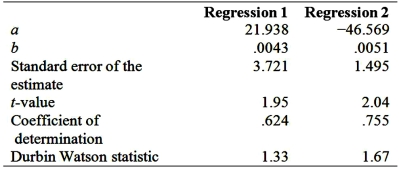Whittenberg Distributors, a major retailing and mail-order operation, has been in business for the past 10 years. During that time, its mail-order operations have grown from a sideline to represent more than 80 percent of the company's annual sales. Of course, the company has suffered growing pains. At times, overloaded or faulty computer programs resulted in lost sales. And scheduling temporary workers to augment the permanent staff during peak periods has always been a problem.
Peter Bloom, manager of mail-order operations, has developed procedures for handling most problems. However, he is still trying to improve the scheduling of temporary workers to take customer telephone orders. Under the current system, Peter keeps a permanent staff of 60 employees who handle the base telephone workload and supplements this staff with temporary workers as needed. The temporary workers are hired on a daily basis; he determines the number needed for the next day the afternoon before based on his estimate of the upcoming telephone volume.
Peter has decided to try regression analysis to improve the hiring of temporary workers. By summarizing the daily labor-hours into weekly totals for the past year, he determined the number of workers used each week. In addition, he listed the number of orders processed each week. After entering the data into a spreadsheet, Peter ran two regressions. Regression 1 related the total number of workers (permanent staff plus temporary workers) to the number of orders received. Regression 2 related only temporary workers to the number of orders received. The output of these analyses follows:
Regression model: W = a + b × T
where:
W = workers; T = telephone orders
 Required:
Required:
1. Peter Bloom estimates that Whittenberg Distributors will receive 12,740 orders during the second week of December.
a. Predict the number of temporary workers needed for this week using regression 1. Round your answer to the nearest whole number.
b. Using regression 2, predict the number of temporary workers needed during this week. Round your answer to the nearest whole number.
2. Which of the two regression analyses appears to be better? Explain your answer.
3. Describe at least three ways that Peter Bloom could improve his analysis to make better predictions than either of these regression results provides. (CMA Adapted)
Definitions:
Urethral Damage
Injury or harm to the urethra, the tube that carries urine from the bladder out of the body, which can lead to difficulty in urination or urinary incontinence.
Large Catheters
Medical devices inserted into body cavities, ducts, or vessels to allow for drainage, administration of fluids, or access by surgical instruments.
Catheterized
The process of inserting a catheter into a bodily cavity, duct, or vessel to allow for the drainage or injection of fluids.
Urine Flow
The rate at which urine is excreted from the bladder through the urethra and out of the body.
Q6: Cleaning Care's margin of safety ratio (MOS%)
Q17: The equation method for CVP analysis:<br>A)Can be
Q30: Chen Textile Company's Job A had normal
Q35: The use of a relationship of total
Q82: What are the total conversion costs transferred
Q89: Helen Auger has seen the Centicle Group,
Q105: The cash budget does not include:<br>A)Cash inflows
Q109: Two students in a cost accounting class
Q117: The following are types of rework except:<br>A)Rework
Q119: How many pounds of steel powder does